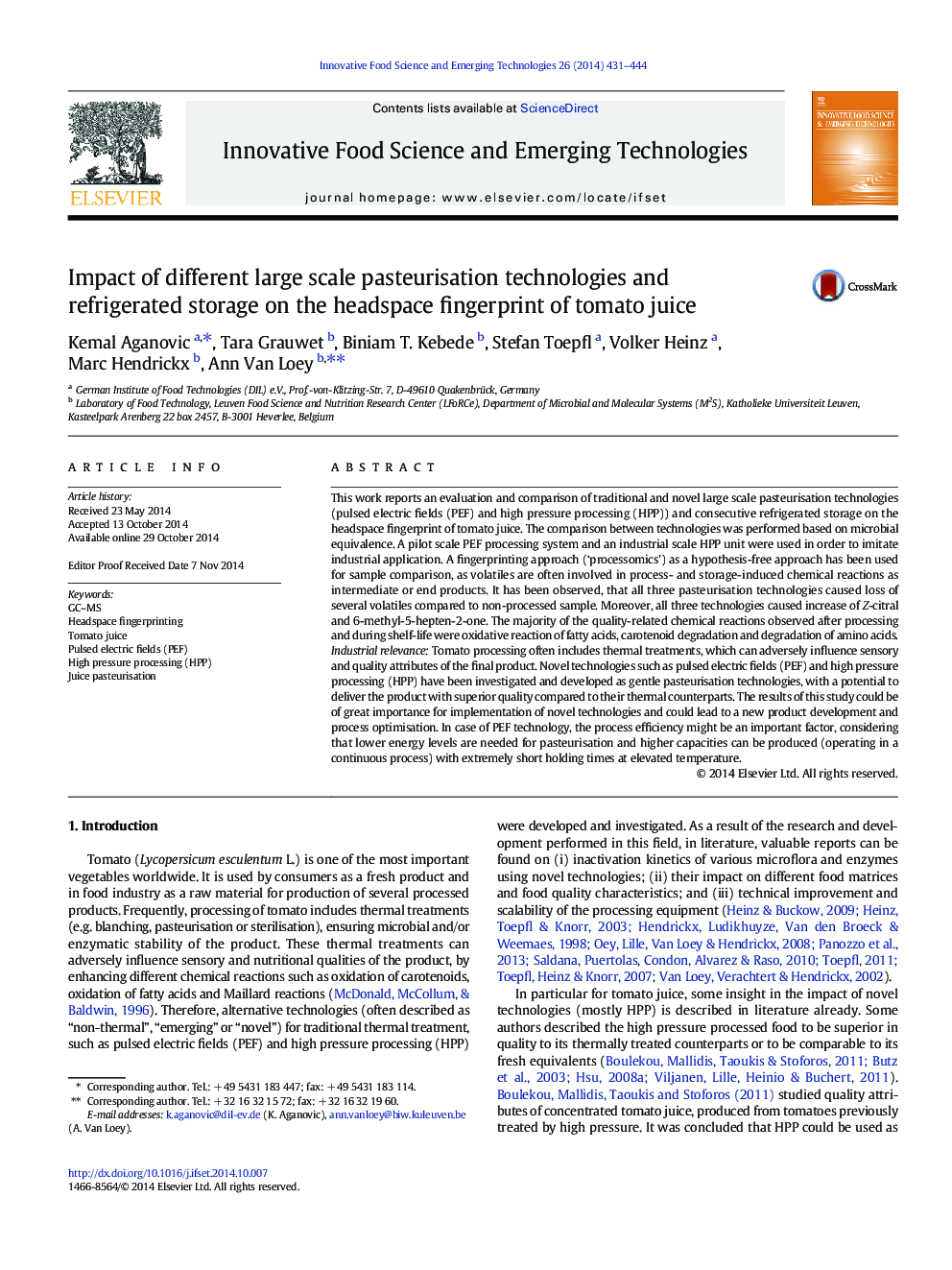| Article ID | Journal | Published Year | Pages | File Type |
|---|---|---|---|---|
| 2086699 | Innovative Food Science & Emerging Technologies | 2014 | 14 Pages |
•Industrial scale HPP and pilot scale PEF and thermal units were used.•The effect of storage on the fingerprint of tomato juice was taken into account.•All pasteurisation technologies caused loss of several volatiles compared to control.•All technologies caused the increase of Z-citral and 6-methyl-5-hepten-2-one.•Fatty acids, carotenoids and amino acids degradation was observed.
This work reports an evaluation and comparison of traditional and novel large scale pasteurisation technologies (pulsed electric fields (PEF) and high pressure processing (HPP)) and consecutive refrigerated storage on the headspace fingerprint of tomato juice. The comparison between technologies was performed based on microbial equivalence. A pilot scale PEF processing system and an industrial scale HPP unit were used in order to imitate industrial application. A fingerprinting approach (‘processomics’) as a hypothesis-free approach has been used for sample comparison, as volatiles are often involved in process- and storage-induced chemical reactions as intermediate or end products. It has been observed, that all three pasteurisation technologies caused loss of several volatiles compared to non-processed sample. Moreover, all three technologies caused increase of Z-citral and 6-methyl-5-hepten-2-one. The majority of the quality-related chemical reactions observed after processing and during shelf-life were oxidative reaction of fatty acids, carotenoid degradation and degradation of amino acids.Industrial relevanceTomato processing often includes thermal treatments, which can adversely influence sensory and quality attributes of the final product. Novel technologies such as pulsed electric fields (PEF) and high pressure processing (HPP) have been investigated and developed as gentle pasteurisation technologies, with a potential to deliver the product with superior quality compared to their thermal counterparts. The results of this study could be of great importance for implementation of novel technologies and could lead to a new product development and process optimisation. In case of PEF technology, the process efficiency might be an important factor, considering that lower energy levels are needed for pasteurisation and higher capacities can be produced (operating in a continuous process) with extremely short holding times at elevated temperature.
